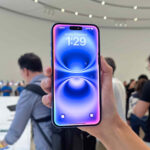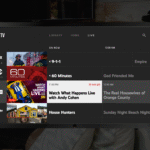We often talk about Android as one singular operating system – but in reality, that’s only half true.
In fact, there are dozens of different takes on the Google-made mobile operating system to choose from, most of which are exclusively paired with a phone maker or larger tech company.
These are known as wrappers, sometimes also called skins or UIs (user interfaces). Each wrapper runs on a version of Android released by Google – some common examples include One UI 7, which runs on Samsung phones and tablets, and the Pixel Launcher, which runs on Google Pixel phones (surprise!).
All Android phones share a lot of key functions, such as the use of Google accounts and certain essential settings, and you’ll see broad similarities in default apps like photo galleries and voice recorders. With that said, it’s the little things that matter, and the tweaks and customizations a phone maker adds can totally redefine the Android experience.
We want to know what you think – if you’re an Android aficionado who already has a certain wrapper in mind, head to the bottom of this article to find our poll. If you’ve more to say, we want to hear it – the comments section is open and ready.
For those who are still undecided, or just want a few more reminders, keep reading for a recap of some of today’s most popular Android wrappers.
One UI 7 – The big One
Samsung’s One UI is probably the best known Android wrapper thanks to the popularity of Samsung handsets as well as its extensive additions to the stock Android experience. Exclusive features include the Now Brief AI-powered newsfeed and Bixby digital assistant.
One UI 7 is the latest version of Samsung’s Android experience, based on Android 15, and powers all of the best Samsung phones on the market. One UI 8 is on the way with the upcoming release of the Samsung Galaxy Z Fold 7 and Galaxy Z Flip 7.
Pixel Launcher – Google’s gold standard
In years past, Google Pixel phones could be said to run ‘stock Android’ – but in more recent times, Google has equipped its line of first-party Android phones with a wrapper that’s grown into one of the most expressive implementations of Android on the market.
Pixel Launcher, currently based on Android 15, is still one of the cleanest and simplest versions of Android, but the Material You design language introduced in 2021 and access to Android beta features before other brands gives it an edge, enhancing the best Pixel phones even further.
OxygenOS 15 – Fast and fluid
OxygenOS 15 – based on Android 15 – is OnePlus’ Android wrapper, and appears on all of the best OnePlus phones. It’s a fast, fluid rendition of Google’s mobile operating system that puts the focus on speedy animations and unique AI. It’s very similar to ColorOS 15, developed by OnePlus’ sister company Oppo.
Notable OxygenOS features include parallel processing for animations, and the OnePlus AI suite of tools and features.
NothingOS 3.0 – Like nothing else
NothingOS 3.0 is an example of an Android wrapper that does things a little differently – dot-matrix graphics, custom widgets, and an austere, heavily monochromed look makes this one of the most distinctive Android wrappers you’ll find.
NothingOS doesn’t offer many big-ticket exclusive features, but rather makes it fun and easy to customize your mobile experience – head to our in-depth Nothing Phone 2 review for a closer look.
Other Android wrappers
Some Android wrappers are less well known, or minimal to the point that their respective phone maker doesn’t create a software brand of its own.
For example, Motorola doesn’t give its implementation of Android a name, seemingly because it’s so close to what Google releases. Motorola’s Android wrapper is so minimal that it doesn’t even have its own photo gallery. It’s a similar story with Sony, which is more focused on photo and video tools than branding its software.
And some phone makers don’t release their devices worldwide – Xiaomi’s HyperOS and Honor’s MagicOS are naturally less well known than more widely released Android wrappers.
Hopefully that quick tour has jogged your memory on today’s most popular Android wrappers. Make sure to cast your vote in the poll above – and if you don’t see your favorite on the list, head to the comments and let us know.
Read the full article here














